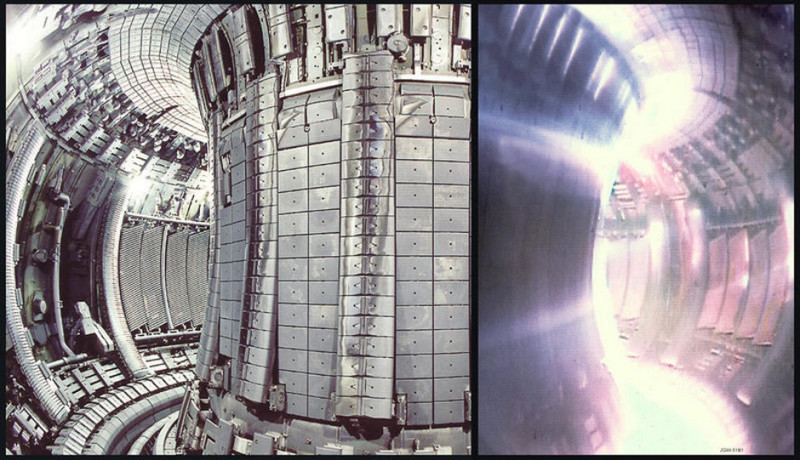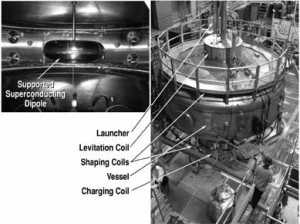Levitated Nuclear Fusion
May 18, 2010
on
on

Recent tests with an experimental nuclear reactor LDX (Levitated Dipole Experiment) have shown good results. According to MIT and the University of Columbia, this machine is able to realise a fusion process that could maintain itself.
Nuclear fusion is the holy grail of clean energy production for many years now. It does not produce nuclear waste like traditional fission reactor s and it uses hydrogen as a fuel. An added benefit since hydrogen is pretty abundant and easily produced while uranium used in fission is not renewable. Some estimates state that if we used fission to produce all the energy we need, we would run out of uranium in about thirty years.
s and it uses hydrogen as a fuel. An added benefit since hydrogen is pretty abundant and easily produced while uranium used in fission is not renewable. Some estimates state that if we used fission to produce all the energy we need, we would run out of uranium in about thirty years.
The biggest obstacle to overcome when using fusion is the temperature of the plasma used in the process. These temperatures are so ridiculously high that no material could withstand them. In other words, any fusion power plant you build, would melt like chocolate in the sun as soon as you fire it up. This is where the levitation comes in. By using superconducting magnets it should be possible to control the plasma in levitation. It is all still very experimental and it will probably take years before it could actually be used to produce electricity. Very much potential though!
Nuclear fusion is the holy grail of clean energy production for many years now. It does not produce nuclear waste like traditional fission reactor
 s and it uses hydrogen as a fuel. An added benefit since hydrogen is pretty abundant and easily produced while uranium used in fission is not renewable. Some estimates state that if we used fission to produce all the energy we need, we would run out of uranium in about thirty years.
s and it uses hydrogen as a fuel. An added benefit since hydrogen is pretty abundant and easily produced while uranium used in fission is not renewable. Some estimates state that if we used fission to produce all the energy we need, we would run out of uranium in about thirty years.The biggest obstacle to overcome when using fusion is the temperature of the plasma used in the process. These temperatures are so ridiculously high that no material could withstand them. In other words, any fusion power plant you build, would melt like chocolate in the sun as soon as you fire it up. This is where the levitation comes in. By using superconducting magnets it should be possible to control the plasma in levitation. It is all still very experimental and it will probably take years before it could actually be used to produce electricity. Very much potential though!
Read full article
Hide full article


Discussion (0 comments)